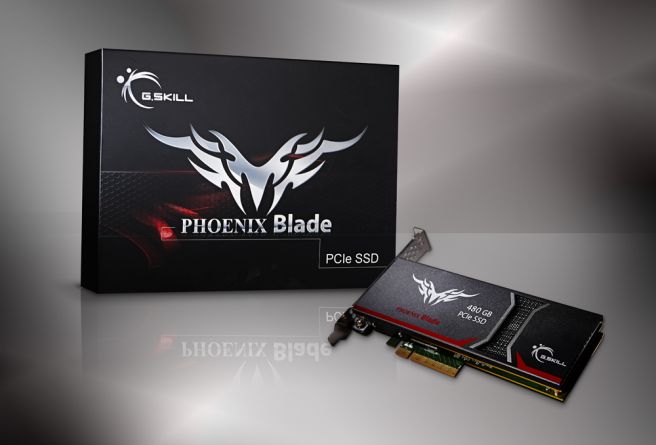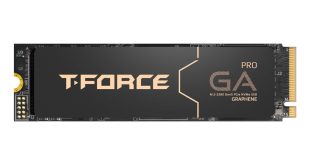If you feel like SATA III SSDs are holding you back with their already sterling performance, then chances are you're considering picking up a PCIe SSD. Fortunately for you, there's now one more option on the market, as G.Skill has announced the release of its new 480GB PCIe SSD, known as the Pheonix Blade.
This near-half-terrabyte storage device uses a PCIe 2.0 x8 interface, so is capable of harnessing the huge bandwidth of its masssive array of MLC flash memory, operating through four seperate controllers running in a RAID 0 configuration. This ultimately gives is a maximum read and write speed of over 2GBps.
4k random write IOPS are also stupendously fast, with G.Skill listing it as high as 245k. 4K random read rates are quoted as 90,000.
As you would expect form a modern piece of kit like this, it also supports TRIM to keep its performance from degrading too much over time and S.M.A.R.T support to let you keep an eye on the drive's health.
However, should you run into a problem with your new Pheonix Blade, there's a three year warranty so it shouldn't be too difficult to get hold of a replacement.
The price of this super powered SSD, will be around £570 when it becomes available in the UK next week.
Discuss on our Facebook page, HERE.
KitGuru Says: That is some monstrous performance, but is it worth it? Have any of you picked up a PCIe SSD in the past and noticed a big difference?
 KitGuru KitGuru.net – Tech News | Hardware News | Hardware Reviews | IOS | Mobile | Gaming | Graphics Cards
KitGuru KitGuru.net – Tech News | Hardware News | Hardware Reviews | IOS | Mobile | Gaming | Graphics Cards




If it’s anything like the asus PCI card then I’ll presume it’ll be worth it, it’s really dependant on cost as you can pick up 120GB/240GB SSD’s from Places like Scan.co.uk for pretty cheap
Corsair tramp stamp, is that you?
Still this one looks better ah ha lol
I would soooo be using this for my sample libraries, hnnnng!
Can boot from it or not?
Yes, this is from the installation manual.
A) .Installing as Storage Drive
1.Install “PhoenixBladeDriverSetup.exe” driver from disc.
2.Follow on-screen instructions and complete installation.
3.Restart system when prompted.
B) .Installing as Operating System Drive
1.Insert Windows installation CD/DVD into disc drive
2.When prompted to install third-party SCSI or RAID driver, press the “F6” key, then press “S” for “Specified Additional Device”.
3.Insert driver disc (or USB flash drive with drivers copied from the [Windows Pre-Install Drivers] folder) and follow on-screen instructions to complete driver and Windows installation.